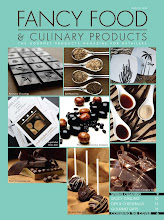As you may be aware, a growing number of peanut butter manufacturers are recalling their products in connection with a salmonella outbreak. What follows is an update from the National Confectioners Association regarding candies and confections containing peanut butter. (Reproduced verbatim.)
-Stephanie
Confectionery Industry Reacts to Recent Salmonella Outbreak in Peanut Butter Containing Products
Provides Consumers Convenient Chart to Help Identify Products Free of Contamination
Vienna, VA – In response to an investigation into a recent outbreak of Salmonella Typhimurium linked to peanut butter and peanut paste, the National Confectioners Association has developed a table for consumers to check the status of their favorite confectionery products. The contamination has been linked to the Peanut Corporation of America whose products are sold and used within a variety of industries. While some confectionery manufacturers, especially makers of health and nutrition bars, do purchase from the source, the majority of peanut, peanut butter and peanut paste containing candies are safe for consumption at this time.
The FDA is keeping a comprehensive list of the products recalled that are not safe for consumption on its Web site, while NCA’s table lists products containing peanut butter that are safe to eat. More than 90 percent of commercially available candy products using peanut butter as an ingredient are free from contamination.
“The manufacture of products that are safe and wholesome is the number one concern of every confectionery company,” said NCA President Larry Graham. “On the very rare occasions that ingredients become a health concern on any level, the industry reacts quickly and in the best interests of its consumers. In this instance, we have worked closely with officials at the Food and Drug Administration to understand the problem, have disseminated information to thousands of manufacturers and retailers and are working to keep consumers up-to-date on the safety of a variety of candy products.”
Graham added the chart available on its Web site will be continually updated until the issue is contained.
NCA also encourages consumers with questions about specific products to contact the manufacturer directly. “Our members welcome calls from consumers who have questions about the safety of their products,” said Graham. “As always, if there is a concern over the safety of any food product and an answer cannot be ascertained in an expedient manner, the recommended course of action is not to consume the product.”
The National Confectioners Association’s table of candy products safe for consumption can be found on its Web site at http://www.candyusa.org/Media/Hot/PeanutButter.asp. The latest information from the FDA about this important food safety matter is found at http://www.fda.gov/oc/opacom/hottopics/salmonellatyph.html#consumers.
About the National Confectioners Association (NCA):
Founded in 1884 in Chicago by representatives of 69 confectionery manufacturing firms, the National Confectioners Association is one of the oldest, most respected trade associations in the world. Today NCA has more than 600 members and is the major association representing the entire confectionery industry, offering education and leadership in manufacturing, technical research, public relations, retailing practices, government relations and statistical analyses. NCA fosters industry growth by advancing and promoting the interests of the confectionery industry, its customers and its consumers.
For Immediate Release: January 22, 2009
Contact: Susan Smith, susan.smith@CandyUSA.com, (703) 790-5750
Thursday, January 22, 2009
Subscribe to:
Comment Feed (RSS)


|